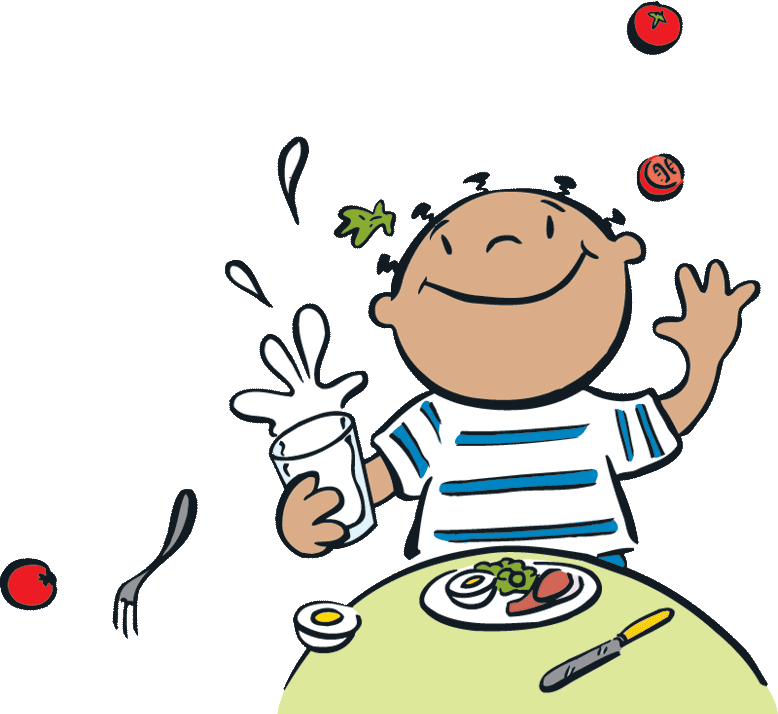Food group
Potatoes, bread, rice, pasta and other starchy carbohydrates
Examples
Bread, breakfast cereals, potatoes, pasta, rice, couscous, quinoa, noodles, chapattis and yams
Quantity
At least one serving with each meal and as some snacks
Key nutrients
Carbohydrate
B vitamins
Fibre
Tips
Small portions of these foods make great snacks
Give a mixture of white, brown and wholegrain varieties. Wholegrain includes wholemeal bread and bread products, wholewheat pasta, brown rice, oats and wholegrain breakfast cereals
Food group
Fruit and vegetables
Examples
All fresh, frozen and tinned fruit (in natural juice) and vegetables (in unsalted water), and dried fruit
Quantity
Aim for 5 a day – offer with each meal and some snacks.
Key nutrients
Vitamins – especially vitamins A and C
Dark green vegetables provide some iron
Fibre
Tips
Dried fruit should be kept to mealtimes only as it has higher concentrations of sugar that can contribute to the development of tooth decay
Vegetables can be easily added to soups and stews. Or some children prefer to eat their vegetables raw
Food group
Milk, cheese and yogurt
Examples
Milk, cheese, yogurt, fromage frais
Quantity
3 portions of dairy a day: one portion is: 100-120ml (small glass) milk, 125g (small pot) of yogurt, 15g of cheese e.g. 1 heaped tablespoon of grated cheese
Key nutrients
Calcium
Protein
Phosphorus
Iodine
Tips
Milk can be used in custard, milk puddings, sauces and soups
Try yogurts as a pudding or snack
Food group
Beans, pulses, fish, eggs, meat, tofu and nuts
Examples
Meat, poultry (e.g. chicken, turkey), fish (e.g. tuna, fish fingers), eggs, nuts*, seeds, pulses (e.g. peas, baked beans, chickpeas, lentils) and soya products such as tofu
Quantity
Offer 2 servings each day for young children. Offer Vegetarian children 2-3 servings every day
Key nutrients
Protein
Iron (especially red meat and liver**)
Other important vitamins and minerals including zinc and vitamin B6
Tips
Even small amounts of meat or oily fish are useful to help keep iron levels topped up
Lean meat, tinned salmon, tuna, peanut butter*, houmous and eggs all make ideal sandwich fillings
*Nuts
Safety: children under five should not be given whole nuts because of the risk of inhaling and choking. Give nuts as crushed nuts, finely ground or nut butters.
Peanut allergy: The risk of an allergy is reduced if children begin eating peanut butter during weaning. Speak to your healthcare professional if you are planning on giving peanuts or foods containing peanuts for the first time when your child is already older than 12 months.
**Liver
If you give liver or liver products to your child, they should be given in very small amounts no more than once a week.

